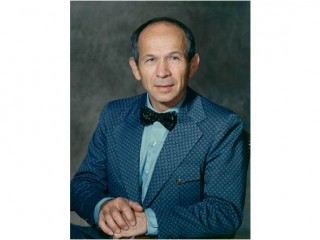
Max Faget biography
Date of birth : 1921-08-26
Date of death : 2004-10-09
Birthplace : Stann Creek, Belize
Nationality : American
Category : Science and Technology
Last modified : 2011-12-21
Credited as : Engineer, Designer of NASA spacecraft, recipient of the NASA Medal for Outstanding Leadership
0 votes so far
Max Faget (pronounced fah-ZHAY) was hired by the National Advisory Committee for Aeronautics, forerunner of the National Aeronautics and Space Administration (NASA), in 1946. He did some of the earliest work on what became the Mercury spacecraft, and designed the Mercury capsule's distinctive tapered shape with a protective heat shield over its blunted nose to protect it from the almost unimaginable heat of re-entry.
In addition to the Mercury capsule, he was chief designer of the Apollo command and service modules and space shuttle orbiter, and was also involved in the teams that designed the Gemini craft, the X-l5 experimental supersonic plane, and the Polaris missile. He argued unsuccessfully for using one-piece solid-rocket boosters on the space shuttle, which some insiders have suggested might have prevented the Challenger disaster.
After his retirement from NASA he founded Space Industries, Inc., a company that was eventually absorbed into General Dynamics.
As a boy Faget subscribed to Astounding Science Fiction, and in college he competed in both wrestling and gymnastics. Short and shy except when he was speaking about technical matters, he was known at NASA for occasionally leaping over chairs and holding informal meetings while standing on his head, "to improve blood circulation in my brain," while keys and coins tumbled from his pockets. His father, Dr Guy Faget, was a physician who, in 1941, developed sulfone into the first effective treatment for leprosy.
Faget is a member of the National Space Hall of Fame and the National Inventors Hall of Fame, and is a recipient of the NASA Medal for Outstanding Leadership.
Author of books:
-Manned Spacecraft: Engineering Design and Operation (1964, with Paul E. Purser and Norman F. Smith)
-Technologies of Manned Space Systems (1965, with Aleck C. Bond)
-Manned Space Flight (1965)
















